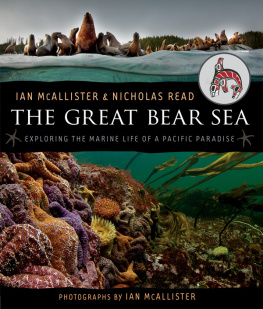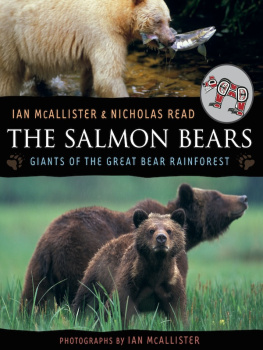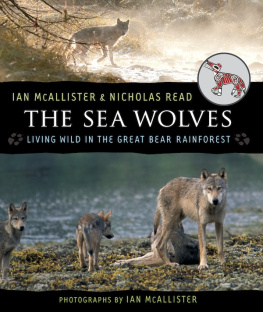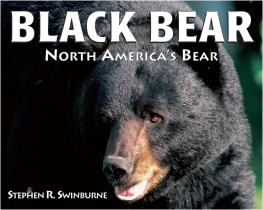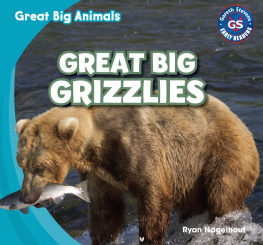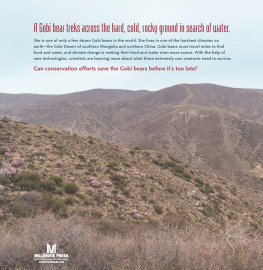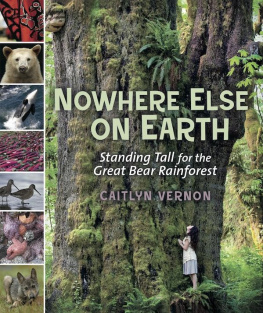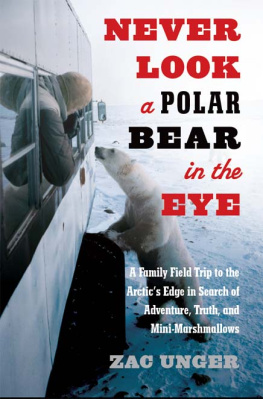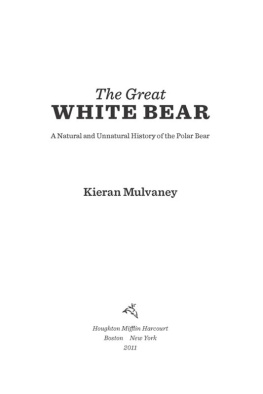
Hooded nudibranchs cling to a kelp frond. These predatory sea slugs are found throughout the Great Bear Sea.
Chapter One
Too Small to See
When we think about the Great Bear Rainforest, we usually think of trees and the animals living among them: the grizzly and black bears, the coastal wolves, the Sitka black-tailed deer, the eagles and the famous spirit bear, a bear with creamy white fur found only on BCs central coast. But even though they all live on land, they owe much of their well-being to creatures at seacreatures so small you need a microscope to see them.
These creatures are called plankton, and the sea is full of them. So much so that plankton account for more than 90 percent of all life in the ocean. Thats right, 90 percent of what scientists call biomass, meaning all the lifebig, small, strong, weak, plant and animalthat exists in the ocean is composed of plankton. When you stop to consider how many fish, whales and other creatures live there too, youll realize what an astounding figure that is.
MARITIME MORSELS
What do plankton look like?
They come in many different shapes and designs. One even resembles the lunar landing module that dropped Neil Armstrong onto the moon in 1969. Some have tails, which they use to whip themselves around the seas surface. But most just let the sea take them where the sea chooses. Hence their name, plankton, which comes from the Greek word planktos, meaning wandering or drifting.
But without plankton those other creatures couldnt survive. When plankton photosynthesize (the process by which plants turn water, carbon dioxide, salt and light into tissue), they release oxygen into the water and eventually the air that rainforest bears and wolves (not to mention you) breathe. About 40 percent of all the photosynthesis on Earth is performed by plankton, meaning about 40 percent of all the worlds oxygen is generated by creatures small enough to balance on the point of a pin.
There are two kinds of plankton: phytoplankton, which are plants, and zooplankton, which are animals. Zooplankton often eat phytoplankton and so become the basis of what are called food webs. When a little fish is eaten by a bigger fish, whos eaten by an even bigger fish or a marine mammal, thats a food web. This is how much of nature works. A killer whale eats a harbor seal who eats salmon who eat herringwho began the whole thing by eating plankton. Millions of them. Some people call this a food chain, but life is more complex than a chain, so a food web is more accurate.

Transparent and majestic nudibranchs are able to swim with small paddle-like flippers.
On any given day there are far too many plankton in the ocean for anyone to count. However, there are times when that already huge number gets even biggerso big that the sea blooms with them. In the Great Bear Sea, the years most important blooms occur in early spring when days get warmer and longer, and more light filters through the seas surface. The presence of this lighter, warmer water is a signal for plankton to multiplyand multiply and multiply. By March, each plankton cell divides into two new cells every day. Multiply that by the number of plankton at sea and youll realize how an explosion of plankton can occur in no time. Within just three weeks, a single plankton cell can produce as many as a million offspring. So it isnt long before the Great Bear Sea becomes a kind of plankton soup. Some blooms grow so big they can be seen from space.
Often one kind of plankton will bloom before another. Then, when that species life cycle is done, it will be followed by another and another. This way, spring blooms lead to summer bloomslike flowers. Spring snowdrops are followed by crocuses, daffodils and tulips. Summer roses precede lilies and dahlias. Plankton blooms are the same. Depending on the time of year and the kind of plankton, plankton blooms can turn the sea red, then orange, then burgundy, then white.
However, regardless of their appearance, its their ecological significance that makes them so important. Its no exaggeration to say that without plankton and the food and oxygen they supply, the world would be profoundly different.
Looking around at the tall trees in the Great Bear Rainforest, its hard to imagine that they owe so much to something as tiny as plankton. But they do. Someone once said good things come in small packages. Whoever it was wasnt kidding.
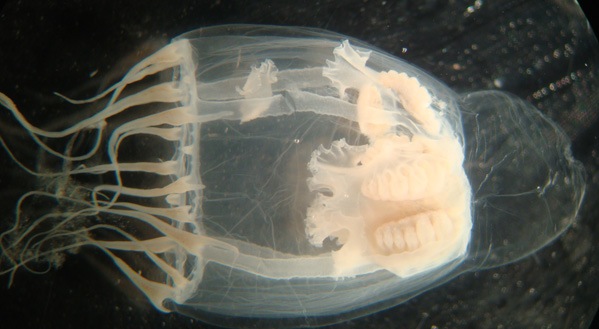
No, its not an alien or a space shuttle thats lost its way. Instead, Pandeidae hydromedusa is one of many species of ocean plankton found in the Great Bear Sea. Plankton form the basis of a food web that extends all the way up to the great whales.
PHOTOGRAPH BY MARIE-JOSE GAGNON
MARITIME MORSELS
Whats a red tide?
You may have heard the expression in relation to fishing. When a red tide is in place, its dangerous to harvest shellfish like clams, mussels or crabs. Plankton are the reason. Some produce toxins that are poisonous to peopleso poisonous that they can cause paralysis. So when these plankton bloom, toxins can build up in shellfish that eat them. These shellfish include geoduck (pronounced goo-ey-duck), clams, oysters, mussels, scallops, whelks and moon snails. And yes, because of the planktons color, the sea, and therefore the tide, really does take on a red/brown hue.
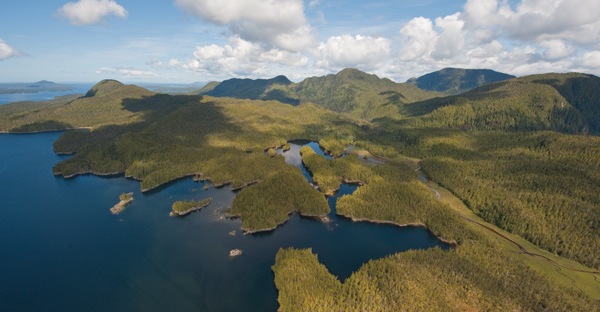
Canadas west coast contains most of the worlds remaining intact temperate rainforest.
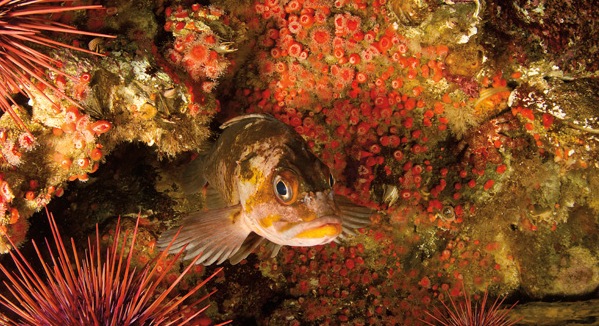
Highly territorial and equipped with poisonous spines, this quillback rockfish can live to be a hundred years oldproviding a predator doesnt eat it first.
Chapter Two
Something Fishy
Theres always more fish in the sea. People use this expression when someones had his or her heart broken. The idea is that, just as there are always more fish in the sea, theres always another man or woman to meet and perhaps fall in love with. Obviously, whoever coined the expression had no idea that a day would come when many of the worlds fish species were disappearing, including those in the Great Bear Sea. But the metaphor does speak to how we once thought the oceans would produce fish forever.
More than 30,000 fish species live in the worlds oceans, and so far we know of only about 325 that navigate the waters of the northeast Pacific. But they range from the finger-sized northern anchovy (pizza, anyone?) to the elephantine Pacific basking shark, a very rare salt-water giant that can grow to be 12 meters (40 feet) long and weigh 6,350 kilograms (7 tons).
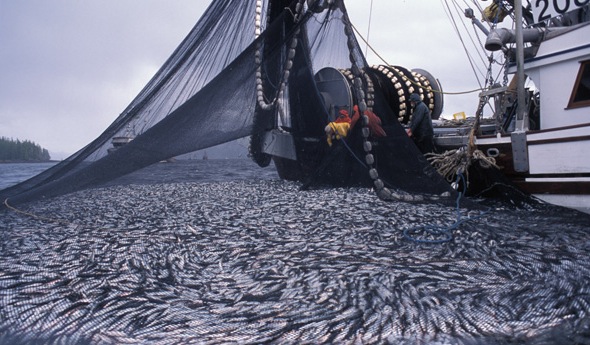
Large-net seine fisheries have caused local herring populations to collapse in many parts of the Great Bear Sea.
Another seventy or so species live in BCs fresh-water lakes and rivers. But a few really exceptional fish live in both. They include the rainforests five species of salmon and its steelhead trout. These fish are

